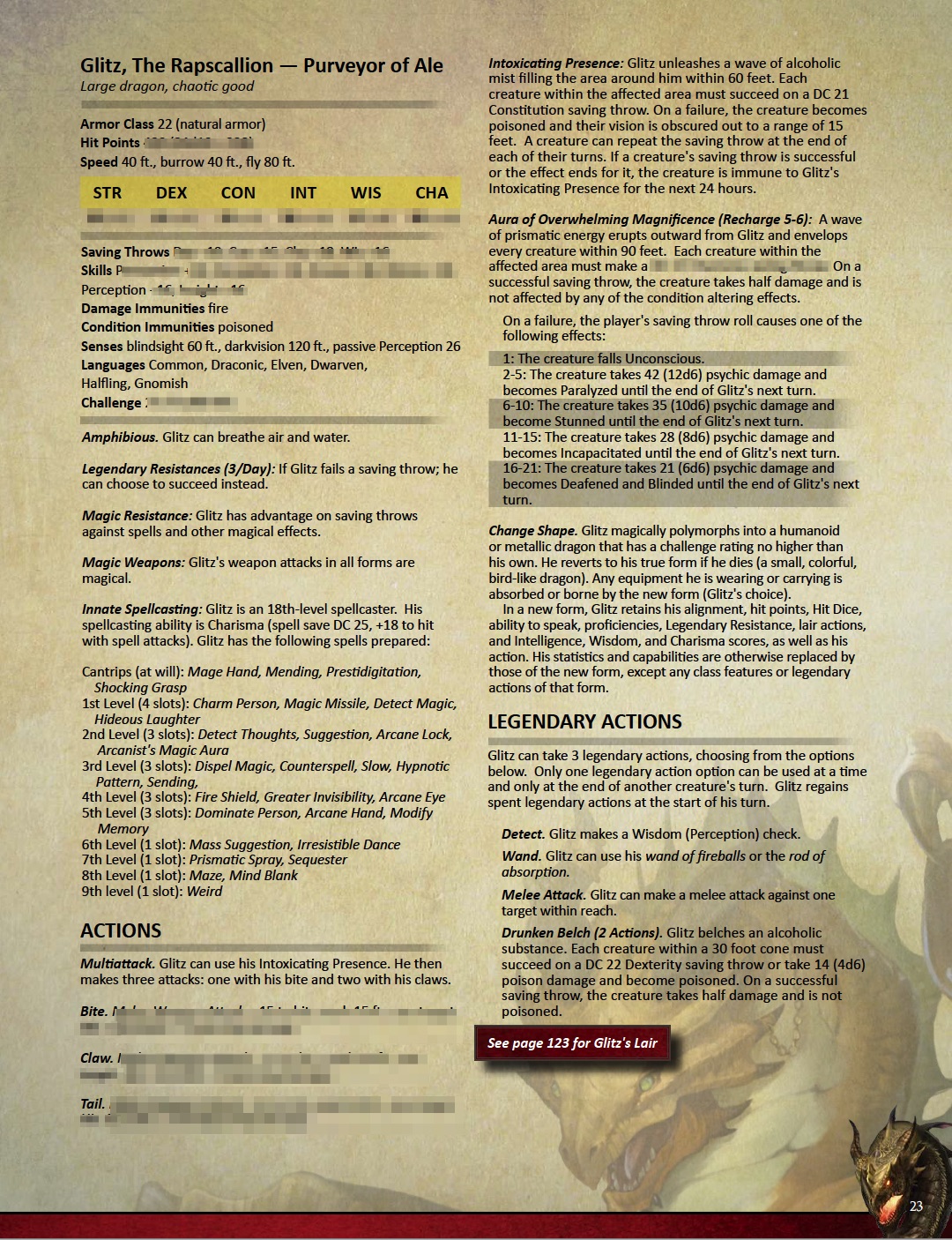

What if I throw just one fire elemental at them? Will that be a Medium encounter? If you said no, you’re right! And here’s why: if we divide 1,800 experience among the seven characters, that’s only 257 XP each–that’s not even considered an Easy encounter! In fact, with a group of characters that size, it’s even worse than that (more on that in a moment). If I reference page 125 of the Monster Manual, I can read that the fire elemental is a CR 5 monster worth 1,800 XP. That’s a total of 8,300 experience for the encounter. Looking at the chart on page 82, I know that Medium challenge for 10th level characters is 1,200 per 10th-level character and 1,100 for the 9th-level character. How many fire elementals can I throw at them to be a Medium challenge? Let’s say that I want to throw some fire elementals at my characters. Now that we kind of have an idea of how much experience my group can handle. If we take a moment to look at the other columns, you’ll see that 600 encounter experience is an Easy encounter for 10th-level characters while 2,800 is Deadly. If I look at the chart on page 82, I see that 1,464 encounter experience is roughly a Medium encounter for 10th-level characters and almost a Hard encounter for 9th-level characters. If there are 6 encounters in a day, then that’s 1,464 experience per encounter per character. That’s about 8,785 experience per character. You’ll remember from above, that I’ve got 61,500 experience to play within an adventuring day. The Encounter Difficulty XP per Character Chart helps you build balanced encounters. But bear with me, once you understand it, it’s not so bad. It tells us how difficult certain encounters are based on the adjusted experience levels for any given encounter.Īdmittedly, this is where things can get a little complicated. Here we find the Encounter Difficulty XP Per Character chart. Next, we turn one page back to page 82 of the Dungeon Master’s Guide. This is effectively my encounter budget for a day. Using the Adventuring Day XP chart, I see that my characters can handle a total of 61,500 experience before needing a long rest (9,000 + 9,000 + 9,000 + 9,000 + 9,000 + 9,000 + 7,500). To determine the total amount of adventuring XP the party can accept in one adventuring day before it needs a rest, find the level and adjusted XP per day per character for each character in the party and add it together.įor example, my current group has six 10th-level characters (one is an NPC) and one 9th-level character. of the Dungeon Master’s Guide shows the Adventuring Day XP chart.

The Adventuring Day XP chart helps you build encounters on a budget. It’s the period that the adventurers go out and do their thing before they need to recover with a long rest. Step #2 – Determine the Party’s XP Threshold per Adventuring DayĪn “adventuring day” is more or less those 18 rounds of combat I mentioned above. So now that you understand the basics, you’ll need to know just how much the party can actually handle in terms of experience. In addition, the party should take at least two short rests per day to recover a portion of their spent resources. This means that the characters playing the game should have enough resources–including hit points, spells, special powers, etc.–to last roughly 18 rounds of combat.
#Dmg 5e dragon how to
Of course, the Core Rulebooks do a pretty good job of explaining how to balance everything. After all, failure to improperly balance an encounter in D&D 5e can lead either to the players getting killed by a non-BBEG encounter or easily handling something that should have been more exciting. One of the big questions that I get asked a lot on Instagram and Facebook messenger is how to properly balance encounters in Dungeons & Dragons Fifth Edition. DM Dave 1 Comment on How to Balance Combat Encounters in Dungeons & Dragons Fifth Edition Posted in How to Guides


 0 kommentar(er)
0 kommentar(er)
